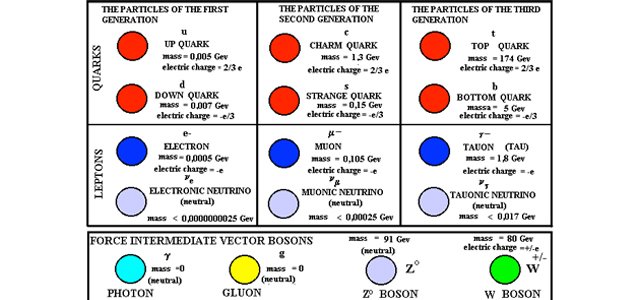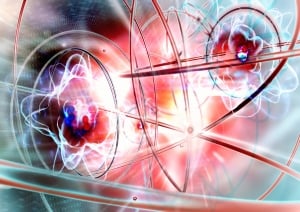Our Curiosity is Piqued at Times
This is one of those
Moments
As I was looking into
The Object of my Curiosity
Wondering if Others. New to this Might Be
A bit Curious about LENR Energy… Just like Me! PIQUED
How many people are newly following recent developments in…
What is Popularly Known as ‘Cold Fusion’ Research and Engineering?
Does the Blog-o-Sphere Eclipse Mainstream Media? Let’s search into this.
How many People Like/Share/Link LENRgy Now?
As the science behind the LENR – low energy nuclear reaction advances
As LENR Science Engages Marketplace Engineering
Is News of LENR Energy Reaching the Public?
Cold Fusion may just be a misnomer. Yes indeed, it certainly is!
A popular name. A story from the past. Which we should speak of at times.
Besides All That
Who is Talking About ‘Cold Fusion’ – LENRgy – Now?
Let’s Feed Our Curiosity and Take a Look
The Statistics of a Few Recent LENR Articles as of 6/13/13
+++++++++++++++++++++++++++++++++++++++++++++++++++++++++++++++++++++++++++++++++++
From ExtremeTech.com
Which is a registered trademark of Ziff Davis, Inc. 18k people have liked ExtremeTech on Facebook.
“Cold Fusion Reactor Independently Verified… Has 10,000 times the energy density of gas.”
Tests find Rossi’s E-Cat has an energy density at least 10 times higher than any conventional energy source
Read more at: http://phys.org/news/2013-05-rossi-e-cat-energy-density-higher.html#jCp
602 Comments. Liked on Facebook 44k times Tweets 1,143 times StumbleUpon 1.5k times Google 1.2k times InShares 157
+++++++++++++++++++++++++++++++++++++++++++++++++++++++++++++++++++++++++++++++++++++
From Phys.Org
A leading web-based science, research and technology news service. 35,513 people follow and 88,810 have like PhysOrg.
By… Lisa Zyga on May 23, 2013
107,259 Views 436 Comments. Liked on Facebook 877 times Tweets 63 times StumbleUpon 68 times Google 85 times
+++++++++++++++++++++++++++++++++++++++++++++++++++++++++++++++++++++++++++++++++++++
From Forbes.com
Mark Gibbs, Contributor
“I cover tech news, science, and tech innovation.” 161 follow him.
“Finally! Independent Testing Of Rossi’s E-Cat Cold Fusion Device: Maybe The World Will Change After All” By Mark Gibbs on May 20.
107,259 Views – 152 comments. Shared on Facebook 6.7k times Tweets 465 times InShare 95 times Submit 151 times Google 289 times.
Here is Another One by Mark Gibbs
“The E-Cat Testing Team, Real or Ringers?” Forbes – By Mark Gibbs on May 24.
7,326 views. 69 comments. Shared on Facebook 97 times Tweets 70 times InShare 1 times Submit 386 times Google 3 times
And Another by Mark Gibbs
“Rossi’s A Fraud! No, He’s Not! Yes, He Is! No, He Isn’t!” Forbes – By Mark Gibbs on May 30.
9,366 views. 133 comments. Shared on Facebook 55 times Tweets 154 times InShare 23 times Google 9 times Reddit 6 times.
++++++++++++++++++++++++++++++++++++++++++++++++++++++++++++++++++++++++++++++++++++++
Let’s Look at the Links to These Forbes Articles
“Finally! Independent Testing Of Rossi’s E-Cat Cold Fusion Device”
“Maybe The World Will Change After All”
- http://www.overclock.net/t/1397217/forbes-finally-independent-testing-of-rossis-e-cat-cold-fusion-device-maybe-the-world-will-change-after-all/60
- http://libertycalling.net/home/categories/miscellaneous/item/890-finally-independent-testing-of-rossi-s-e-cat-cold-fusion-device-maybe-the-world-will-change-after-all
- http://www.wanttoknow.info/a-finally-independent-testing-rossis-ecat-cold-fusion-device-maybe-world-will-change-after-all
- http://now.motherearthnews.com/story/priority2/finally-independent-testing-of-rossis-ec/44335868394632693765674e6264596d6767684d46413d3d
- http://www.usnationpost.com/tech/519aff55e4b0a33fe9e1311a_finally-independent-testing-of-rossis-ecat-cold-fusion-device-maybe-the-world-will-change-after-all.htm
- http://www.freerepublic.com/focus/chat/3022044/posts
- http://www.i4u.com/2013/05/cold-fusion/maybe-world-device-independent-finally-rossis-cold-after-e-cat-all-fus
- http://doubtfulnews.com/tag/cold-fusion/
- http://www.scoop.it/t/lenr-revolution-in-process-cold-fusion/p/4001951175/finally-independent-testing-of-rossi-s-e-cat-cold-fusion-device-maybe-the-world-will-change-after-all
- https://plus.google.com/+JohnBlossom/posts/4kuaqvVKqix
- http://www.alternativefuse.com/rssreader/#.UbQcXeeKIfU
- http://www.getthefive.com/articles/the-in-crowd/cold-fusion-could-change-the-world-again/
- https://www.facebook.com/Call2Change/posts/599358476748479
- http://inagist.com/all/337050951036846082/?utm_source=inagist&utm_medium=rss
- http://bd.summit.net/blog/2013/05/finally-independent-testing-of-rossis-e-cat-cold-fusion-device-maybe-the-world-will-change-after-all/
- http://69.162.85.146/article/17234284/Finally!%20Independent%20Testing%20Of%20Rossi’s%20E-Cat%20Cold%20Fusion%20Device:%20Maybe%20The%20World%20Will%20Change%20After%20All
- http://www.physicstoday.org/daily_edition/science_and_the_media/forbescom_renews_attention_to_widely_disparaged_low-energy_nuclear_reactions
- https://coldfusionnow.org/discovery-news-misinforms-on-cold-fusion-again/
- http://www.overunityresearch.com/index.php?topic=2117.msg31980;topicseen
- http://news.silobreaker.com/finally-independent-testing-of-rossis-ecat-cold-fusion-device-maybe-the-world-will-change-after-all-5_2266834726809501780
- http://intjforum.com/showthread.php?p=3430299
- http://www.std.com/~mica/cft.html
- http://anakupto.blogspot.com/2013/05/finally-independent-testing-of-rossis-e.html
- http://www.rumormillnews.com/cgi-bin/testforum.cgi?noframes;read=277588
- http://100pct.us/story/top_stories/finally-independent-testing-of-rossis-ec/44335868394632693765674e6264596d6767684d46413d3d
- https://twitter.com/quistuipater/status/336738236598730753
- http://www.e-catworld.com/2013/05/lenr-the-next-phase/
- http://www.gotnewswire.com/news/finally-independent-testing-of-rossis-ecat-cold-fusion-device
- http://www.weboflove.org/inspiringnewsstories
- http://www.faces.co.ug/m/news_feed/view/71614121
- http://www.inooz.co.uk/article/view/2861494/finally!-independent-testing-of-rossi-s-e-cat-cold-fusion-device-maybe-the-world-will-change-after-all/052013
- http://www.e-cat.com/2013/05/forbes-mark-gibbs-on-the-e-cat-3rd-party-report/
- http://www.lenr-forum.com/showthread.php?1517-Forbes%92-Mark-Gibbs-on-the-E-Cat-3rd-Party-Report
- http://donalfagan.wordpress.com/2013/05/23/excess-heat/
- http://aashiqui-2.xaowei.com/shows.php?q=Finally!+Independent+Testing+Of+Rossi%26%2339%3Bs+E-Cat+Cold+Fusion+Device%3A+Maybe+The+World+Will+Change+After+All
- http://hobbyspace.com/Blog/?p=2357
- http://teakdoor.com/world-news/128274-cold-fusion-almost-reality-e-cat.html
- http://www.energeticforum.com/renewable-energy/6720-suppression-document-youtube-9.html
- http://mikethemadbiologist.com/2013/05/30/links-53013/
- http://www.investorvillage.com/smbd.asp?mb=237&mn=68598&pt=msg&mid=12812599
- http://jonwizardnews.wordpress.com/2013/05/28/finally-independent-testing-of-rossis-e-cat-cold-fusion-device-maybe-the-world-will-change-after-all-forbes/
- http://pesn.com/2013/05/20/9602320_VINDICATION–3rd-Party-E-Cat_Test-Results-show-at-least-10x-gain/
- http://digitalflame.org/Cold-Fusion
- http://atom-ecology.russgeorge.net/2013/05/21/fossil-fuel-age-replaced-by-cold-fusion-less-than-a-decade-away-from-clean-energy/
- http://forum.hegnar.no/thread.asp?id=2179460http://www.pentaxforums.com/forums/general-talk/209194-what-happens-if-cold-fusion-does-become-reality-6.html
- http://forums.somd.com/environment-green-living-alternative-energy/271610-lenr-third-party-confirmation.html
- https://delicious.com/dbaulig
- http://www.abovetopsecret.com/forum/thread948626/pg1
- http://sport.topnewstoday.org/sport/article/6059012/
- http://alessandrosicurocomunication.wordpress.com/2013/05/25/la-fusione-fredda-italiana-funziona-ci-credono-tutti-tranne-gli-italiani-che-devono-deciderne-lutilizzo-e-lo-sfruttamento-lo-dichiarano-sempre-piu-fonti-autorevoli/
- http://www.usmessageboard.com/science-and-technology/294967-hot-cat-report-out-and-vindicates-rossi-s-claims.html
- http://smallestminority.blogspot.com/2013/05/paradigm-shift.htmlhttp://smallestminority.blogspot.com/2013/05/paradigm-shift.html
- http://forum.weatherzone.com.au/ubbthreads.php/topics/1195555/Re_The_Alternative_Energy_Scam
- http://sdoppiamocupido.blogspot.com/2013/05/fusione-fredda-italiana-prime-conferme-test-indipendenti.html
- http://www.examiner.com/article/top-news-wsj-on-strange-9-11-phone-calls-goldman-sachs-drives-up-food-costs
- http://www.kiwiblog.co.nz/2013/05/general_debate_21_may_2013.html
- http://klokkresearch.tumblr.com/
- http://slopeofhope.com/2013/05/groupon-is-wall-street-paying-attention.html
- http://denverdirect.blogspot.com/2012/11/the-senior-director-of-bonds-and.html
- http://museandmaven.wordpress.com/2011/11/07/management-guru-peter-drucker-on-facts/
- http://www.continentalwhoswho.co/index.php/technology-and-networking/156-technology1/460-profile-skydoor-pte-ltd
- http://intelfaces.com/2013/05/20/ibms-watson-now-a-customer-service-agent-coming-to-smartphones-soon/
- http://aren.soup.io/tag/science
- http://www.brucetanner.info/
- http://lessthantwominutes.wordpress.com/tag/syria/
- http://www.anomalist.com/?49442d20
- http://techme101.com/2013/05/20/build-your-startup-on-a-vacant-domain-name/
- http://elivergarablog.wordpress.com/
- http://publiccircles.appspot.com/dailycircle/gideon_rosenblatt-writer_s_circle/2013-05-22
- http://slackpile.com/2013/06/07/cold-war-missile-silo-converted-to-home-on-market-for-750k/
- http://www.digitalpodcast.com/feeds/23299-mysterious-universe-podcast
- http://www.handelsblatt.com/politik/deutschland/-haseloff-kritisiert-roesler-cdu-ministerpraesident-fordert-energieministerium-/8270726.html
- http://ephemeral-thoughts.tumblr.com/
- http://piratica.eu/search?tag=power
- http://offlogic.wordpress.com/page/2/
- http://forum.mind-energy.net/skeptiko-podcast/5195-indication-anomalous-heat-energy-production-reactor-device-containing-hydrogen-loaded-nickel-powder.html
- http://mysteriousuniverse.org/2013/05/episode-920-mysterious-universe/
- http://denverdirect.blogspot.com/2012/11/the-senior-director-of-bonds-and.html
“The E-Cat Testing Team, Real or Ringers?”
- http://www.democraticunderground.com/112744965
- http://biznewsindex.com/news/the-e-cat-testing-team-real-or-ringers-
- http://ewallstreeter.com/the-e-cat-testing-team-real-or-ringers-3450/
- http://technogasm.com/the-e-cat-testing-team-real-or-ringers/
- http://www.scoop.it/t/lenr-revolution-in-process-cold-fusion/p/4002214038/the-e-cat-testing-team-real-or-ringers
- http://www.dailynewscrunch.com/technology/the-e-cat-testing-team-real-or-ringers
- https://twitter.com/learnpublishing/status/338057275015049216
- http://www.i4u.com/2013/05/ringers-or-real-team-e-cat-testing
- http://www.sportballa.com/2013/05/real-team-ringers-testing-or-e-cat
- http://article.wn.com/view/2013/05/24/The_ECat_Testing_Team_Real_or_Ringers/#/related_news
- http://bd.summit.net/blog/2013/05/the-e-cat-testing-team-real-or-ringers/
- http://business.topnewstoday.org/business/article/6108640/
- http://www.e-catworld.com/2013/05/wired-uk-covers-e-cat-cold-fusion/
- http://inagist.com/all/340733940962836480/
- http://www.rsshog.com/a/2013-05-24/the-e-cat-testing-team-real-or-ringers-forbes/bCV7QRysoFmjzcEcqppmpAxv67w9omS2qa2XUI3wqCs_/
- http://liberalforum.org/liberalforum/index.php?/topic/148930-now-this-could-be-real-hope-for-change-lenr-news/
- http://www.crazyontap.com/topic.php?TopicId=301276&Posts=15
- http://occupywallst.org/forum/independent-testing-of-rossis-e-cat-cold-fusion-de/
- http://phys.org/news/2013-05-rossi-e-cat-energy-density-higher.html
- http://uk.emailpress.net/2013/finally-independent-testing-of-rossis-e-cat-cold-fusion-device-maybe-the-21-05/
- http://www.peaceofmindnews.com/2013/06/06/
- http://www.extremetech.com/extreme/156393-cold-fusion-reactor-independently-verified-has-10000-times-the-energy-density-of-gas
- http://nickelenergy.wordpress.com/
- http://ecatbuilder.com/newsfeeds/
- http://www.bullfax.com/?q=node-cold-fusion
- http://www.sciforums.com/showthread.php?109913-Low-Energy-Nuclear-Reactions-(cold-fusion)/page93
- http://www.sharedividends.com.au/eal
- http://www.tecnopoly.cl/tech/index.html
- http://techandgaming247.com/the-e-cat-testing-team-real-or-ringers/
“Rossi’s A Fraud!”
“No, He’s Not! Yes, He Is! No, He Isn’t!”
- http://www.scoop.it/t/lenr-revolution-in-process-cold-fusion/p/4002463249/rossi-s-a-fraud-no-he-s-not-yes-he-is-no-he-isn-t
- http://bd.summit.net/blog/2013/05/rossis-a-fraud-no-hes-not-yes-he-is-no-he-isnt/
- http://newssly.com/rossis-a-fraud-no-hes-not-yes-he-is-no-he-isnt/#.UbRdCt1xBDg
- http://markets.financialcontent.com/mi.centredaily/news/read/24304138/rossi’s_a_fraud!_no
- http://ewallstreeter.com/rossi-s-a-fraud-no-he-s-not-yes-he-is-no-he-isn-t-4163/#_/exjun_
- http://www.mail-archive.com/vortex-l@eskimo.com/msg81874.html Ed Storms!
- http://www.dailynewscrunch.com/technology/rossi-s-a-fraud-no-he-s-not-yes-he-is-no-he-isn-t/
- http://uk.emailpress.net/2013/rossis-a-fraud-no-hes-not-yes-he-is-no-he-isnt-30-05/
- http://www.globalne.ws/Latest/D/4028810e3ee8734f013ef3c65926002f/Rossi’s-A-Fraud–No,-He’s-Not–Yes,-He-Is–No,-He-Isn’t-#.UbRjHN1xBDg
- http://business.topnewstoday.org/business/article/6176279/
- http://technogasm.com/rossis-a-fraud-no-hes-not-yes-he-is-no-he-isnt/
- http://www.wopular.com/rossis-fraud-no-hes-not-yes-he-no-he-isnt
- http://snciawr.newsonfeeds.com/article/17262668/Rossi’s%20A%20Fraud!%20No,%20He’s%20Not!%20Yes,%20He%20Is!%20No,%20He%20Isn’t!
- http://marketblok.com/2013/05/30/rossis-a-fraud-no-hes-not-yes-he-is-no-he-isnt/
- http://buzzelicious.com/rossis-a-fraud-no-hes-not-yes-he-is-no-he-isnt/
- http://www.e-catworld.com/2013/05/forbes-gibbs-on-e-cat-fraud-claims/
- http://inagist.com/all/340733940962836480/
- http://www.lenr-forum.com/showthread.php?1560-Forbes%92-Gibbs-on-E-Cat-Fraud-Claims
- http://www.getthefive.com/articles/the-in-crowd/cold-fusion-could-change-the-world-again/
- http://www.i4u.com/2013/05/andrea-rossi-footballer/hes-fraud-yes-he-rossis-isnt-he-no-no-not
- http://www.hotheadlines.com.au/redirect.php?h=Rossis_A_Fraud_No_Hes_Not_Yes_He_Is_No_He_Isnt_&artid=2229009
- http://www.checkitdaily.com/news/articles/rossis-a-fraud-no-hes-not-yes-he-is-no-he-isnt
- http://15minutenews.com/article.php?articleid=6900347
- http://pesn.com/2013/05/30/9602324_LENR-to-Market_Weekly_May30/
- http://www.newsxs.com/en/go/12310685/Forbes.com_Technology/
- http://factorfixitremotepcrepair.factormatt.com/rossis-a-fraud-no-hes-not-yes-he-is-no-he-isnt/
- http://theeestory.ning.com/forum/topics/lenr-or-cold-fusion-thread?commentId=6495062%3AComment%3A75493&xg_source=activity
- http://www.ecathome.eu/?m=201305
- http://scienceblogs.com/startswithabang/2013/05/21/the-e-cat-is-back-and-people-are-still-falling-for-it/
- http://realn3ws.com/rossis-a-fraud-no-hes-not-yes-he-is-no-he-isnt/
- http://energyresearch.com.au/index.php?topic=62462.0
- https://plus.google.com/communities/111126146224334527320
- http://www.ecatnews.net/author/e-cat-world/
- http://feedjunkie.com/item/11279692/Rossi’s%20A%20Fraud!%20No,%20He’s%20Not!%20Yes,%20He%20Is!%20No,%20He%20Isn’t!
- https://alpha.app.net/quistuipater/post/6203353
- http://ao.finalweb.net/site/aoarticle_display.asp?sec_id=140002434&news_id=140001484&issue_id=2
- http://www.reddit.com/r/LENR/
- http://pro-e-trading.com/testimonials/
- http://pro-e-trading.com/products/bullion/
- http://www.gascentre.unece.org/ece-gas-portal/news/news-agencies/forbes-energy/
- http://www.analysisonline.org/site/aoarticle_section.asp?issue_id=2&sec_id=140002434
- http://www.innovativedo.com/2013/05/elon-musk-we-need-to-leave-earth-or-we.html
- http://www.vastwind.com/news.php
- http://www.continentalwhoswho.co/index.php/ice-magazines/fall-2012
- https://delicious.com/Gio746
- http://strive-struggle-succeed.org/2013/05/29/atm-repair-is-important/
- http://techeffectcomputers.com/
- http://politicalprofanity.com/terms-of-use-privacy-policy/
- http://1krownpromoting.com/2012/02/26/virginia-grind-family-dj-hood/
- http://digitalcommerce2009.blogspot.com/2009/01/business-concept-vs-business-model.html
- http://www.globaladvisors.biz/inc-feed/20130529/how-fast-food-eaters-split-along-ethnic-lines/
- http://absolutebusiness.co/2013/05/29/avoiding-speeding-tickets/
- http://www.bignewsnetwork.com/index.php/sid/214852117/scat/6034630751577834
- http://stocktradingnewsanalysis.com/2013/05/30/practical-advice-on-the-smartest-trades-in-foreign-exchange/
- http://eupolitics.einnews.com/news/sweden-fraud
- http://businessnewsandjournal.com/whats-a-big-deal-in-commercial-real-estate-rebound/
- http://forexinvestmentreport.com/2013/05/10/
- http://onlinebizweekly.com/luiz-ros-of-the-inter-american-development-bank-on-how-business-can-fight-poverty
- http://www.johnyah.com/2013/05/vince-shamwow-video.html
- http://stockmarketsfutures.com/2013/05/29/home-based-business-tips-that-can-improve-your-life/
- http://www.thebusinessinvestment.com/2012/06/
- http://coldfusionenergytech.com/cold-fusion-science/
- http://www.stocktradingfinance.com/2013/05/30/the-stock-market-basics-tips-advice-and-secrets/
- http://markets.buffalonews.com/buffnews/news/channelinfo?ChannelID=6679
- http://www.metrologytools.co.uk/pressure-measuring-devices
- http://markets.financialcontent.com/mi.centredaily/news/read/24304138/rossi’s_a_fraud!_no
- http://www.pittand.com/rss/news/Rossi’s+A+Fraud!+No,+He’s+Not!+Yes,+He+Is!+No,+He+Isn’t!
Pay Attention Now Students…
Links at Universities to the Independent Test Report
High Energy Astrophysics Division at the Harvard-Smithsonian Center for Astrophysics
Piqued?
The verb pique means to make someone angry or annoyed.
But when something piques your interest or curiosity, like LENR, the verb pique just means to arouse, stimulate, or excite.
Both the noun and verb are pronounced “pēk” and were borrowed from a French word meaning “a prick, irritation,” from Old French, from piquer “to prick.”
So you can see how something that pricks you could make you both excited and angry. Keystone, Fracking. Fukashima… Why when we have LENR energy at hand?
Enough to make you want to storm away from our present energy policies. That storming away, by the by, might be called a “fit of pique.”
CHOOSE YOUR WORDS peak/peek/pique
Let’s look at three homophones: peak, peek, and pique.
Peak is a topmost point, such as a mountain peak, or to reach that point (finally)
We’ve had a recent peak in LENR interest.
A peek is a glance or a quick look, like you can do with all these Forbes article links.
It’s frequently paired with sneak, which can lead you to use the incorrect peak; like carbon and U238 energy futures.
If LENR doesn’t pique your interest, what will?
Take a peek at this, it’s the very peak of this vocabulary presentation.
Here’s your mnemonic device:
You have to reach to gain the peak.
If you peer at something, you are peeking.
And if you’re piqued about something, there’s usually a question in your mind.











